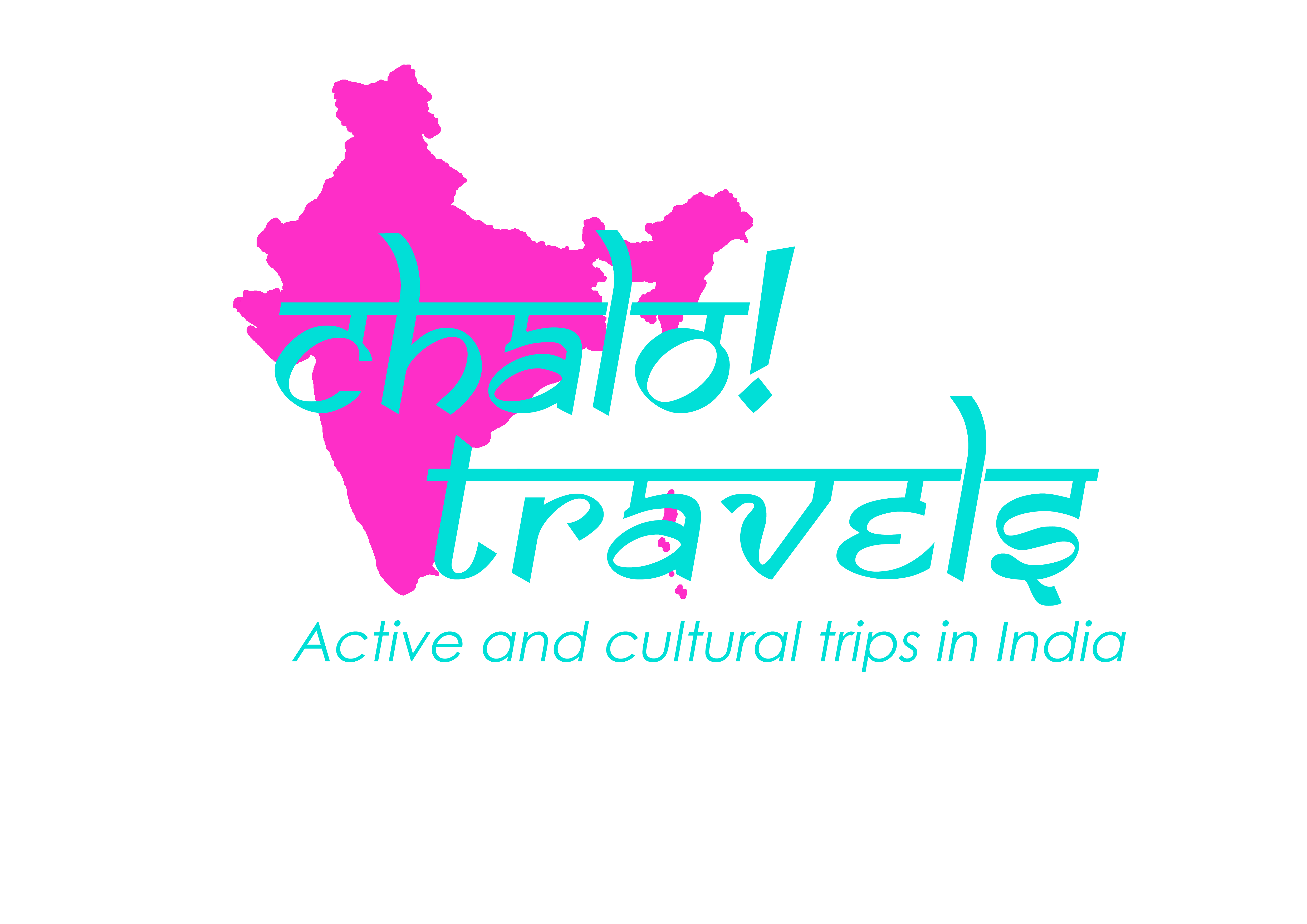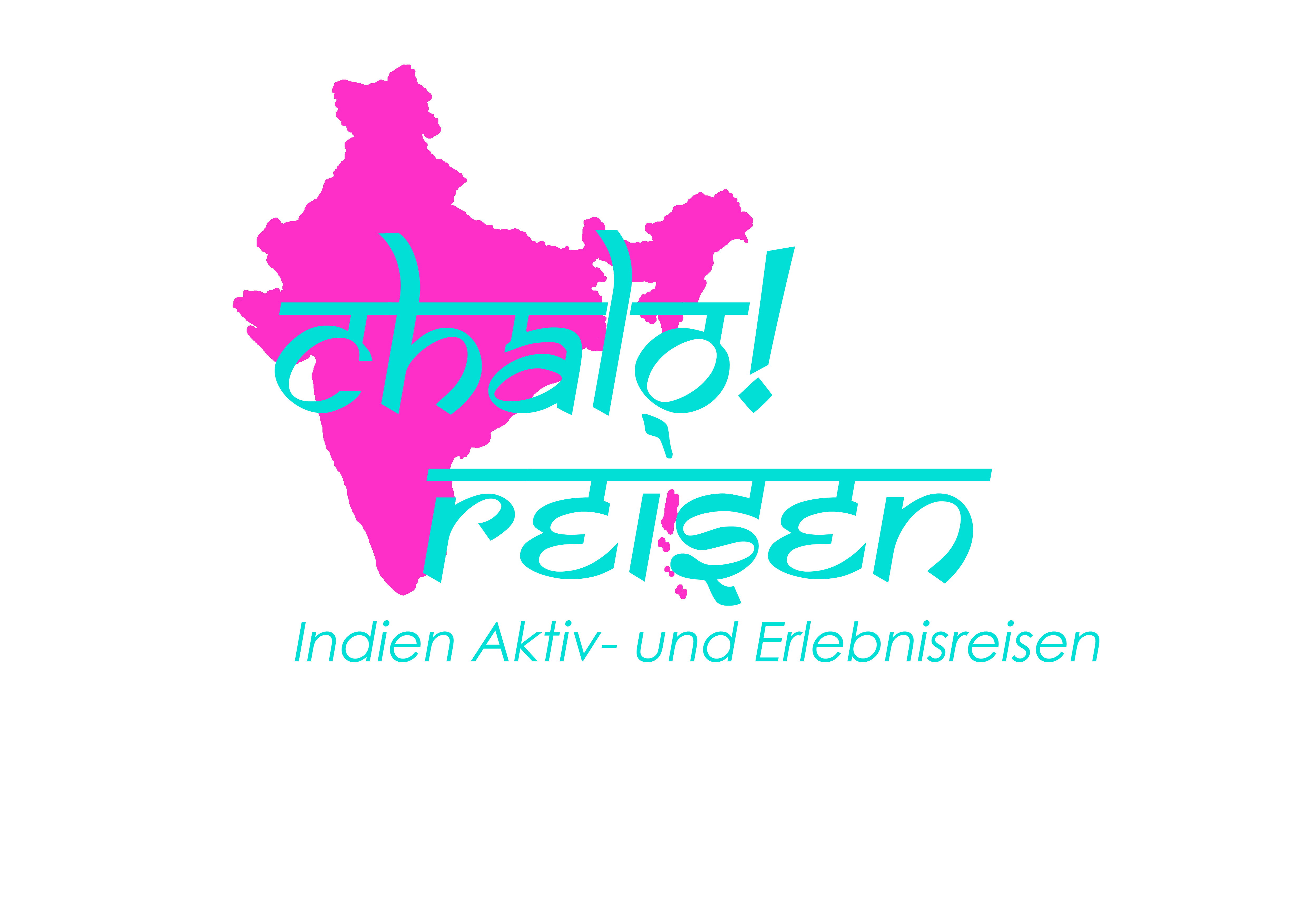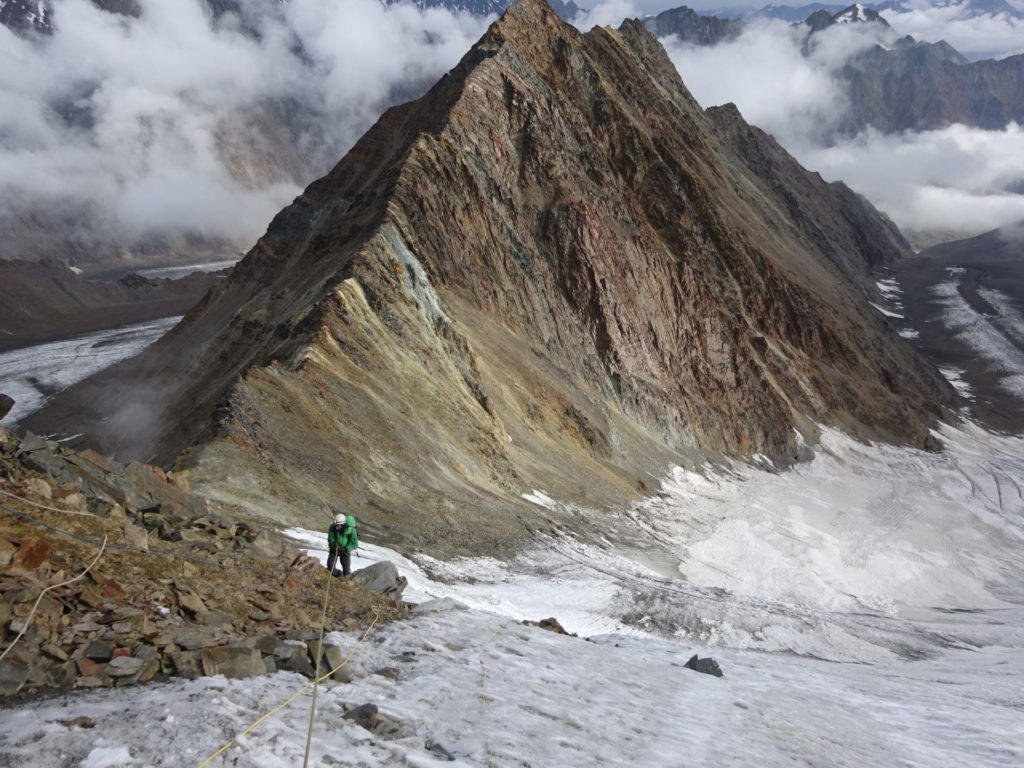- Sport & Abenteuer Reisen
- Trekking Reisen
Overview
This technically demanding peak is located in the C.B. mountain range in the central Lahaul massif. The name of the chain derives from the two rivers Chandra and Bagha, which form the boundary of the massif. Climbing this peak takes you over the huge Dhaka glacier, the largest in the Lahaul Valley. There will be steep ascents and descents over loose boulders, many crevasses and steep ice passages – mountaineering at the highest level. From the so-called Chandra Bagha 13 you have a great view of the Kunzum mountain range, the Chandratal lake and the Chandra river. Since the actual expedition starts at 4000 meters, we will take a three-day acclimatization trek in Manali in advance in order to be well prepared for the altitude in the high mountain desert of the Lahaul Valley.
Program
Day 1 Arrival in Delhi, transfer to hotel and onward journey to Manali in the afternoon
We pick you up from the airport and bring you to your hotel, After a breakfast and some peace and rest, we go for a short sightseeing tour in Delhi. In the afternoon the journey continues: With the Volvo bus (air-conditioned) we drive 14 hours to Manali overnight. Overnight stay on bus (B/-/-)
Day 2 Arrival in Manali
In the morning we reach Manali and check into our Hotel. today we use the day to recover from the long journey and get to know Manali. Overnight stay at the hotel (B/-/-)
Day 3 Start Three-day acclimatization trek to Khanpari Tibba (4100 m)
Old Manali (2100 m) to Lama Dug (2850 m) 5-6 hours
It goes steep uphill through all vegetation layers of the Himalayas: first through dense coniferous forest, then deciduous forest and later through bushes and over flower meadows. The higher we get, the more beautiful the view of the Rothang Pass and the Kullu Valley. We reach a at a stream. This is where we camp. Overnight in a tent (B/L/D)
Day 4 Lama Dug to Khanpari Tibba (4100 m) and overnight at Rani Sui Lake (3900 m)
Well strengthened, it goes uphill again with light luggage. The flower splendour is gets more and more beautiful! Also the view gets better. we can see the Indarasan and the Deo Tibba, two six-thousanders of the Pir-Panjal chain as well as the Hanuman Tibba of the Dauladhar chain. We reach a ridge and continue up to the top of Khanpari Tibba. On the other side there is small Rani Sui lake. Here we pitch our tents. Overnight in a tent (-/L/D)
Day 5 Rani sui to Old Manali (2300m) 6 hours
After breakfast, it goes steeply down through deep forest to Old Manali. Overnight stay at the hotel (B/L/-)
Day 6 Presentation of the team, purchasing, and distribution of equipment
Today we use the day for the intensive preparation for our expedition. We get to know the whole team, check the equipment and if there is any final work to be done, we will do it today. The evening concludes with a joint dinner. Overnight stay at the hotel (B/-/D)
Day 7 Manali to Bathel by jeep 140 km
A six-hour drive over the 3980 m high Rothang Pass into the high mountain desert of the Lahault valley. On a poorly developed jeep slope we go as far as Bathel – a small settlement consisting of simple catering buildings below the 4500 m high Kunzum Pass. This is where we set up our first camp. Overnight in a tent (B/L/D)
Day 8 From Bathel Trek to Basecamp (4400 m)
Today our expedition starts towards CB 13. It goes north along the Chandra River in the valley. The path is narrow but clearly recognizable, depending on the water level,three mountain streams have to be crossed. We walk next to the flattening mountain range to our left boulder hills and rough nature.
After a green meadow area we turn left into the branching valley. There another 300 meters of ascent to the base camp (4400 m) at the foot of the glacier moraines. Here there is water (shortly follow the path to the edge of the river, then from the left source) and campgrounds around a shepherd’s hut.Overnight in the tent (B/L/D)
Day 9 Basecamp to Advanced Basecamp (ABC) (5000 m) and Back to Basecamp
In order to further acclimatize, we are now undertaking a so-called “load ferry” and will transport some of our equipment to the next higher camp. Over the moraines we follow the glacier on the left. The valley widens a little, the first peaks become apparent. A steady ups and downs along boulders finally take us to another branching valley. There, 200 metres of altitude through debris heading east up to the ABC. A first look at the CB13 opens up. After a rest, the descent back to the base camp takes place. Overnight in a tent (B/L/D)
Day 10 Ascent to the ABC
Today we go up to the ABC. Here we pitch our tents. The advanced base camp at 5000 m offers a beautiful panoramic view of the glacier and the mountains below. Overnight in a tent (B/L/D)
Day 11 Ascent to Camp 1
Today we climb another 300 m to 5300 m. The ascent over debris and ice is moderate and in about 2 hours we will reach Camp 1. During the ascent, we will find remnants of an Indian army aircraft that crashed here in 1968. we use the afternoon for some technical training.
Day 12 at Camp 1 for acclimatization
Today we may use it to get used to the altitude. If necessary, we climb to the summit camp to practice technical mountaineering and transport part of the load to the higher camp. Overnight in a tent (F/M/A)
Day 13 Camp 1 to the summit camp (5600 m)
We follow south into the horseshoe-shaped mountain cauldron, over wide boulder fields and then later cross the glacier. We are about to climb to the summit camp, which is above the saddle. Here, for the first time, crampons, pimples, and depending on the conditions also rope find its use.
From the summit camp you have a fantastic view from ridges over mountains and glaciers to the south and west and the ascent route in the east.
A high night at an altitude of 5600 m prepares the summit day. Overnight in a tent (F/M/A)
Day 14 Summit Camp to the summit (6264) and back to Camp 1
There are still about 600 meters to the summit (6264 m), so we start in the very early morning hours. With complete equipment and secured ropes, it goes over snow, ice and rock to the summit. Smaller climbing passages over rock are available.
After the successful ascent of the summit, the descent to the summit camp and on to Camp 1 follows.
Steep places are insured and roped off, the rest carefully descended. Overnight in a tent (F/M/A)
Day 15 Camp 1 back to Basecamp
A four-hour descent to the base camp, where we are immersed in the efforts of the summit day. Overnight in a tent (F/M/A)
Day 16 Descent to Bathel
We’re going to get off to Bathel and spend our last night in the tent here. Overnight in a tent (F/M/A)
Day 17 Scheduled Extra Day
In case of bad weather or need of an additional rest day, we plan an additional “buffer” day. Overnight in a tent (F/M/A)
Day 18 Return to Manali (125 km)
We make the six-hour drive back to the green Kullu valley to Manali and celebrate our summit success here. (Overnight stay at the hotel (F/M/A)
Day 19 Departure from Manali
In the afternoon you can take the bus overnight to Delhi (overnight in the air-conditioned Volvo bus, 14 hours) F/-/-
Day 20 Departure from Delhi
A hotel room is available for the day in Delhi. In the evening, the taxi will take you to the airport. (F/-/-)
Services
- 2 x Hotel Delhi, 3 x Hotel Manali with breakfast
- German-language full support from /to Delhi
- Total transport (transfers, jeep, 2 x Volvo bus Delhi- Manali)
- Three-day acclimatisation trek
- Mediation to expedition team:
- Trained mountain guides
- Cook and helper
- Load horses or carriers up to Camp 1
- Accommodation in 2-man tents (1-man tent surcharge)
- Kitchen tent to Camp 1
- Full catering during the expedition
- Transport from Manali to the start of the expedition
- complete expedition equipment
Personal trekking equipment (clothing, backpack, headlamp, trekking shoes, gloves etc.)InsuranceIMF PermitInternational flight
Highlights
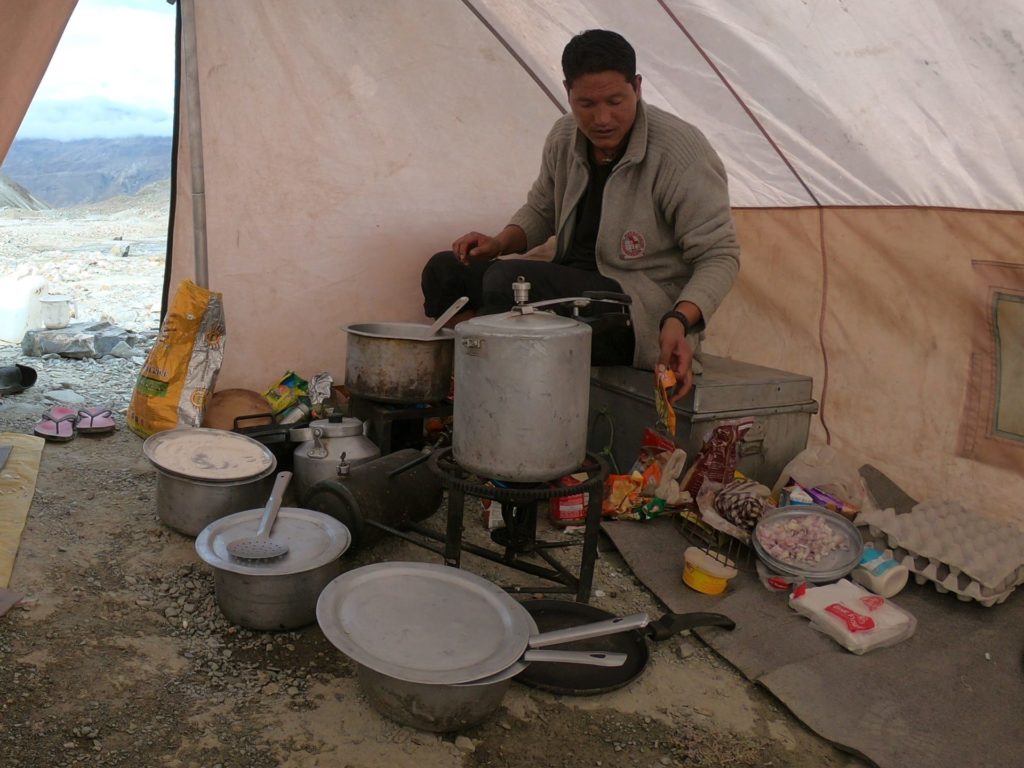
C.B. 13 Expedition 
C.B. 13 Expedition 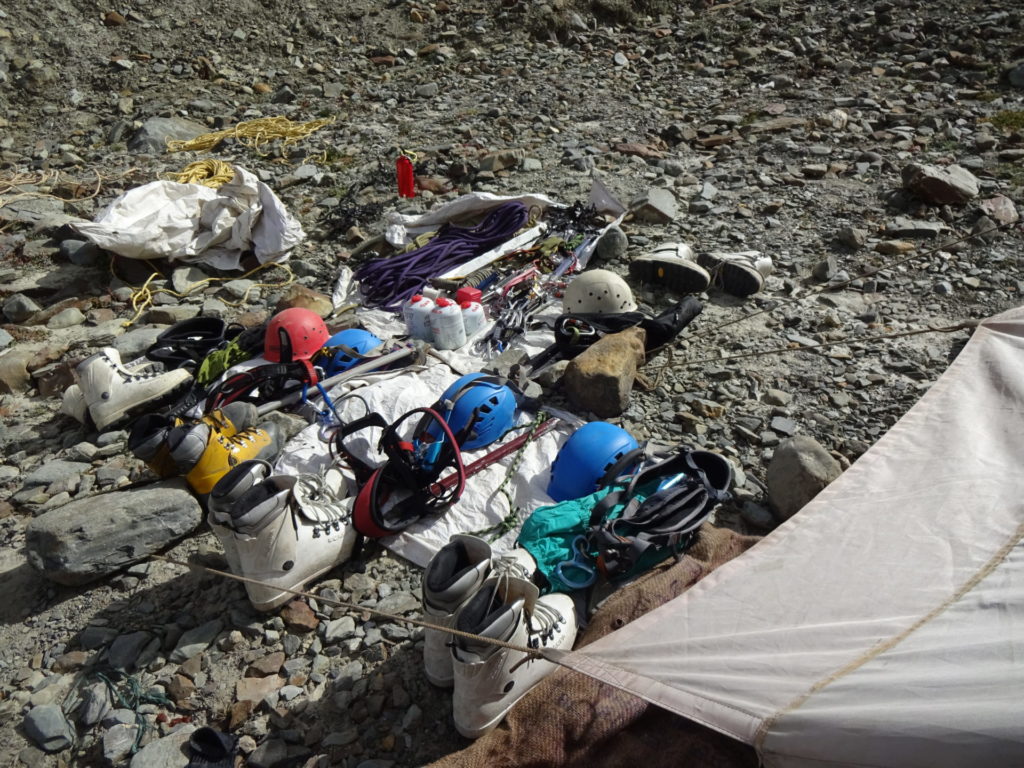
C.B. 13 Expedition 
C.B. 13 Expedition 
C.B. 13 Expedition 
C.B. 13 Expedition 
C.B. 13 Expedition 
C.B. 13 Expedition 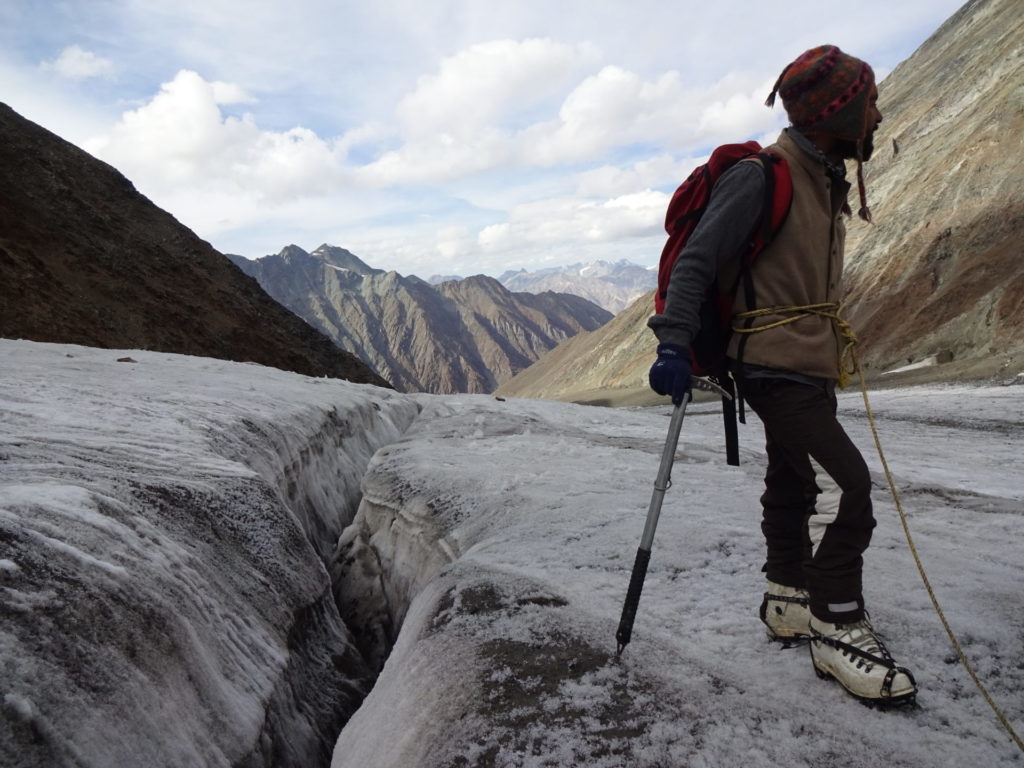
C.B. 13 Expedition 
C.B. 13 Expedition 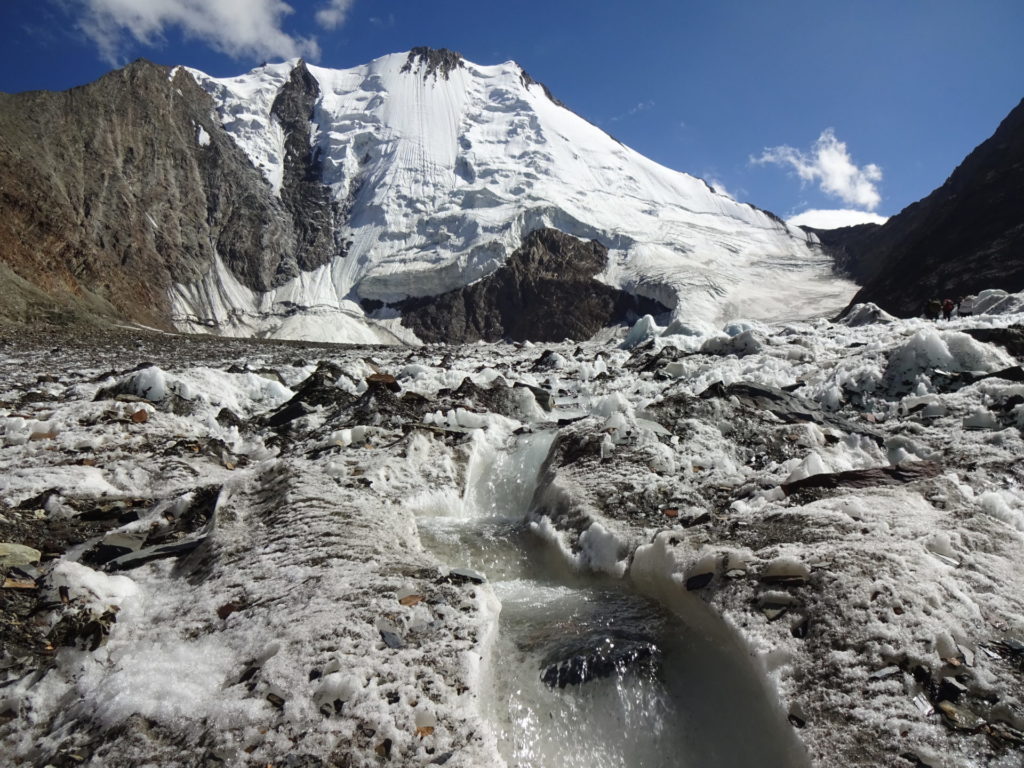
C.B. 13 Expedition 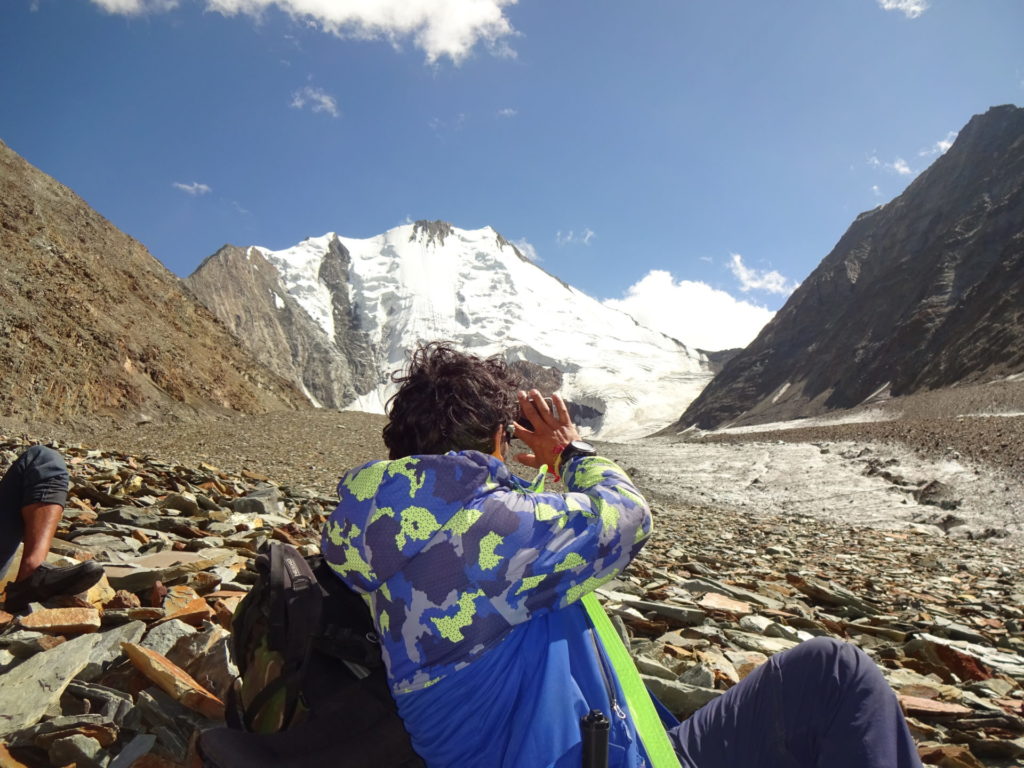
C.B. 13 Expedition 
C.B. 13 Expedition 
C.B. 13 Expedition 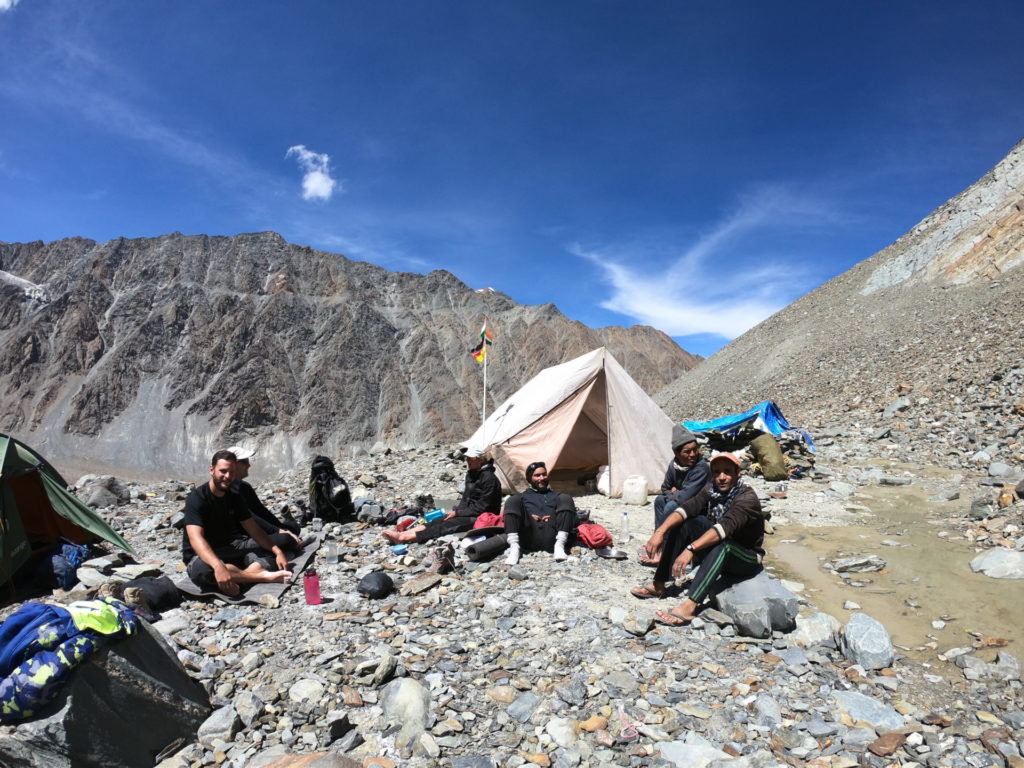
C.B. 13 Expedition 
C.B. 13 Expedition 
C.B. 13 Expedition 
C.B. 13 Expedition 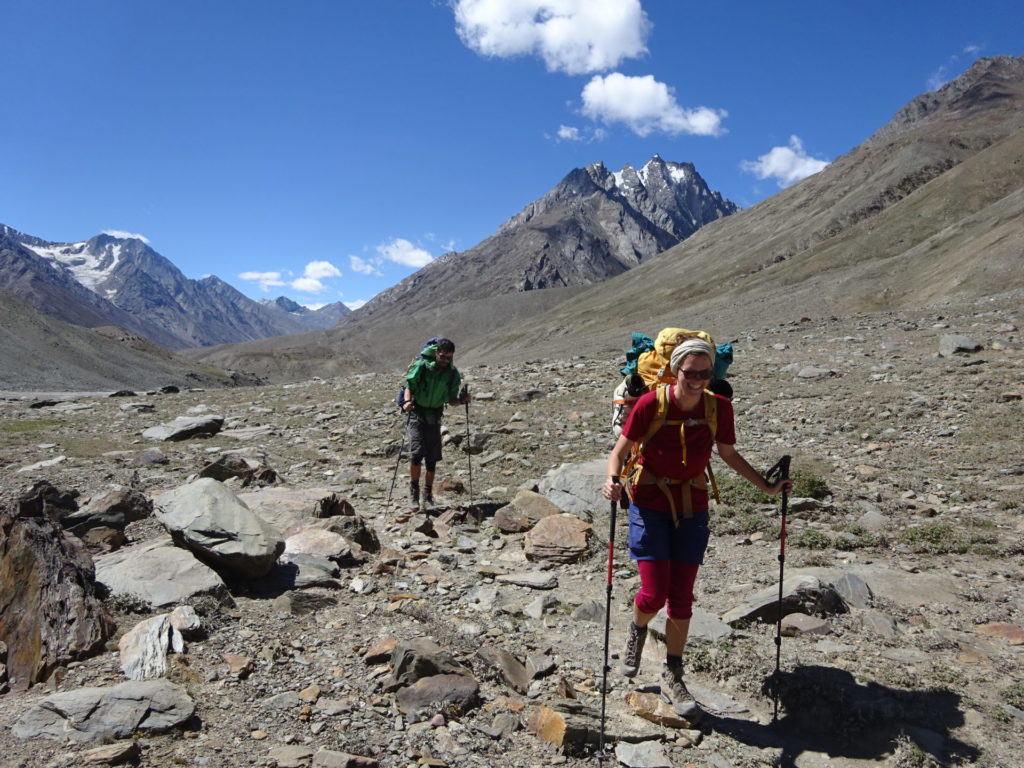
C.B. 13 Expedition 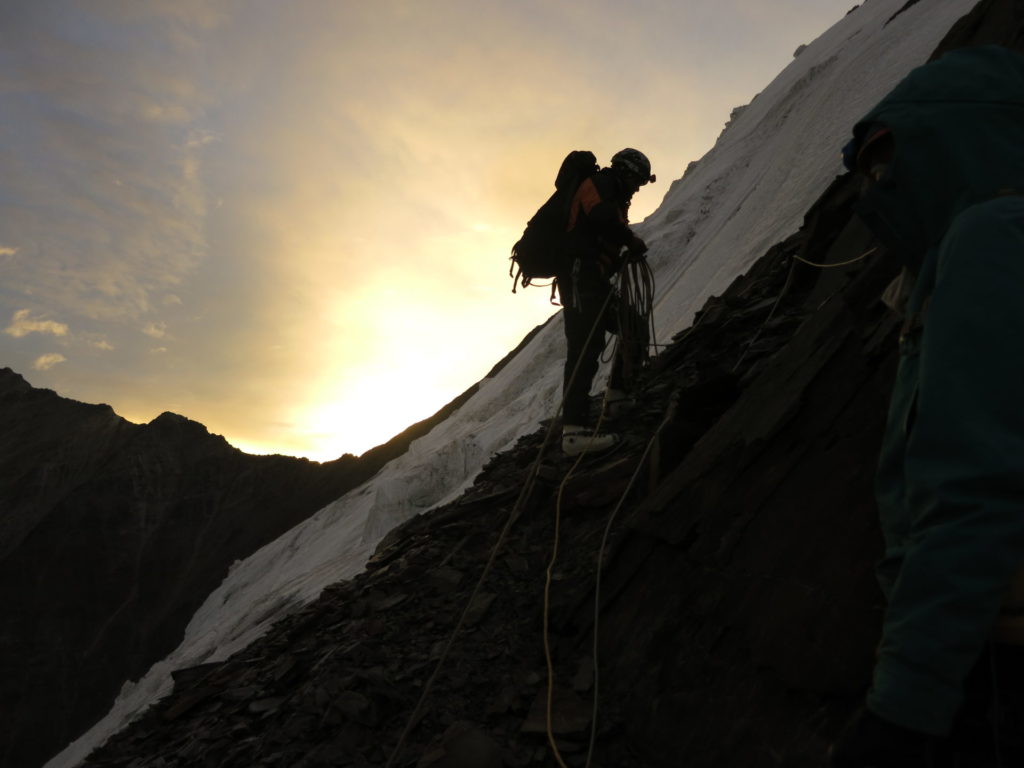
C.B. 13 Expedition 
C.B. 13 Expedition 
C.B. 13 Expedition
Prices and Dates
This expedition is possible in the months of June, July, August and September and can be combined with the ascent of the C.B. 14! Please make an inquiry.
From 2 participants 3200 € per person
From 4 participants 2800 € per person
From 6 participants 2500 € per person
Tour Info
Requirements
Mt. Bhagirathi 2 ist nur für erfahrene Trekker gedacht, die ihre Grenzen testen wollen. Die Herausforderungen auf der Expedition sollten nicht unterschätzt werden. Sie sollten diesen Trek nur versuchen, wenn Sie bereits Touren gemacht haben, die bis auf 4700-5000 Meter ansteigen. Es wird empfohlen, diese Expedition nicht zu wählen, wenn Sie sich in großen Höhen nicht akklimatisieren können. Außerdem müssen Sie eine starke körperliche Ausdauer haben, um diese Expedition zu bewältigen.
Information about our Expeditions in the Indian Himalaya with Chalo! Travels
- Mountain guide and team
On all our expeditions we have at least two trained local mountain guides with us. Our mountain guides have all completed all Indian mountaineering training and regularly lead expeditions and mountaineering courses. They have climbed the peaks several times and know the terrain excellently. All our mountain guides speak English.
In addition, there is a local team that will accompany us at least until the base camp. Which includes cook, helpers, horsemen with horses or Nepalese carriers, depending on the type of trek up to the base camp.
All our team members have been working with us for years, are very friendly, professional and always striving to give our guests a great experience and fulfill their wishes. Their English is rather mediocre or non-existent, but this is not necessarily a hindrance to communicating with them.
2. Summit
The summits have a different level of requirements from simple to difficult. Even with simple ascents of the summit, certain climbing techniques are required, as well as the use of equipment. On each of our tours we include days of practice to learn or repeat techniques and practice using crampons, ice picks, gaiters and using the rope. Thus, even inexperienced participants can participate in a summit expedition with a more difficult degree. The peaks are between 5000 and 6500 meters high.
The first days of the expeditions to the base camp are more like trekking days. The daily routes are between five and eight hours long (with breaks) and an average increase of around 500-800 metres of altitude is completed.
In between, rivers may have to be crossed. The paths are partly well developed, but sometimes also almost non-existent. On our trekking routes there are hardly any villages between, so we will take enough food for the whole tour.
From the base camp we will reduce our team and only travel with our guests and the mountain guides. While the rest of the team will stay in base camp. Meals will be easier, the daily routes can be up to 12 hours and especially on the day of the summit we start in the early morning hours around 2:00-3:00. From Base camp we will be on the road with all the equipment and depending on the situation, the mountaineering team will fix the ropes.
In all our expeditions we have planned 1-3 additional days in case the weather conditions are bad or we need more time for a good acclimatization. If we reach the summit without these additional days, our guests have a hotel in Manali at their disposal.
3. Daily routine till Base camp
7: 00 am Get up with tea
7:30-8:30 am Breakfast
7:00-9:30 am Dismantling of the camp
8:00- 9:30 am Start Trek
1:00 pm Lunch on the way
3:00-5:00 pm Arrival at the camp and camp construction
3:30-5:30 pm Snacks
7:00 pm Dinner
4. Altitude and altitude sickness
This is a very important topic that should not be underestimated, especially during our expeditions in the Indian Himalayas. At altitudes above 3500 m, our body has to slowly get used to the low air pressure, which also causes less oxygen to enter our lungs. The first signs of altitude sickness are headaches, which are accompanied by dizziness, nausea, insomnia and loss of appetite. It becomes problematic when water accumulates in the lungs and brain, and edema occurs. Then only the immediate descent to lower altitudes will help. To prepare for the heights on our treks, we will spend some nights in the same camp and do so-called “loadferrys”. This means that we transport some of our luggage to the next higher camp the day before and get back to the low camp. During the trek we will slowly ascend to acclimatize. If we notice that there are problems with our guests (each person is otherwise able to acclimatize, regardless of age, gender and fitness level), either the entire tour group or the participant with a team member descends/returns. In addition, it makes sense to take an emergency drug for altitude sickness. For this, it is best to inform yourself at the pharmacy or seek advice from the travel doctor. In addition, we will have oxygen with us for the emergency.
Our expeditions are organized in such a way that the complete tour from Delhi to Delhi is usually possible in two weeks. Nevertheless, we advise our guests to extend this period as far as possible in order to have more time for the actual acclimatization.
5. Luggage
On our expeditions from Basecamp, every expedition participant is responsible for carrying his or her personal clothes and belongings, as well as for his own equipment and some of the food and team equipment (ropes, materials, tents, cooking utensils). The total weight will be between 15 and 20 kg. Until base camp we will have the support of carriers and load horses. Here is the packing list for our expeditions.
6. Meals
During the trek to the base camp there will be a vegetarian full catering. Water is either boiled or we have a water filter with us.
Breakfast (daily selection):
Coffee/Tea
Oatmeal porridge/muesli/cornflakes/Indian porridge
Indian Breakfast/Toast/Eggs/Jam/Butter/Cheese/Honey/Chocolate Spread
Sliced fruit/vegetables
Lunch (mostly lunchbox), sometimes warm in the camp:
Sandwiches/Indian (rice, chapati, vegetables)/eggs/potatoes
Juices
Chocolate
Fruit
Snacks:
Tea/coffee
Cookies
French fries/Indian snacks
Soup
Dinner (depending on the length of the trek, a mix of Indian/Chinese/Continental):
Vegetable dish
Lentil dish
Rice/noodles
Chapati
Salad
Dessert
7. From Base camp, meals are more simple with carbohydrate-rich food
Breakfast:
Tea, Coffee
Oatmeal, muesli, rice
Lunch (self-carried and divided for all days):
Dried fruits and nuts
Chocolate bar/muesli bar
Boiled potatoes/eggs
Cheese
Fruit
Snacks:
Biscuits, Soup, Instant Noodles, Tea/Coffee
Dinner:
Noodles/rice/instant dishes/couscous
8. Accommodation and Camp
We have light 2-3 man tents, sleeping bags with comfort zone up to -5°C, as well as good mats. It is recommended to bring personal indoor sleeping bags.
In addition, we have a spacious dining tent with tables and chairs, and a kitchen tent for the team up to base camp. For expeditions of up to 4 people, the kitchen tent can also act as a dining tent at the same time.
From Base camp we will not have a kitchen and dining tent.
9. Temperatures
In the Himalayas, temperatures fluctuate widely. While it can get warm up to 25°C during the day and the sun is not only warming but also very intense (sun protection is a must), it can also cool down at night well below the minus degrees with temperatures down to -10° C, especially in the months end of September and October, as well as in June and at altitudes from 4500 meters. There may also be weather changes with snow and storms. Bad weather can always be a hindrance for a successful climb.
-
5
Überschrift
Lorem ipsum dolor sit amet, consetetur sadipscing elitr, sed diam nonumy eirmod tempor invidunt ut labore et dolore magna aliquyam erat, sed diam voluptua.
